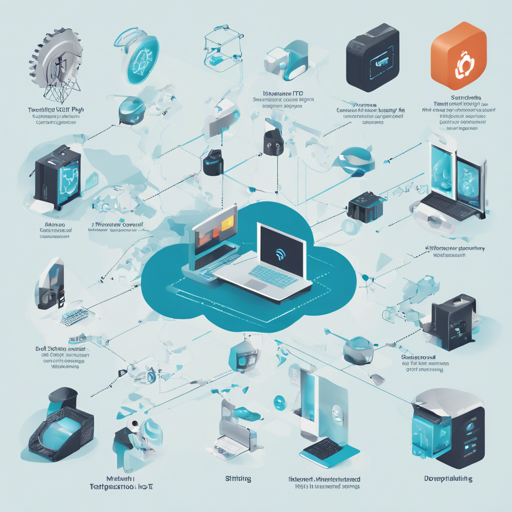SiteWhere is an industrial-strength, open-source IoT Application Enablement Platform designed for the ingestion, storage, and integration of IoT device data at a massive scale. Built with a microservices architecture and supported by cutting-edge technologies, SiteWhere makes scaling and managing IoT projects efficient and robust.
Understanding SiteWhere’s Core Components
Before diving into the deployment process, let’s explore the key components of SiteWhere using an analogy. Think of SiteWhere as a bustling city, with the following roles:
- Microservices: These are the individual buildings in our city, each serving a specific function. Each microservice is self-contained, handling distinct tasks from data processing to configuration management.
- Kubernetes: This is the city’s infrastructure—roads, utilities, and planning. Kubernetes orchestrates the microservices to work together smoothly, scaling them as needed.
- Apache Kafka: Imagine a robust highway system allowing data to travel quickly between buildings without congestion. Kafka efficiently manages data flow between the microservices, ensuring smooth operation.
- Istio: This is akin to the city’s traffic management system. Istio regulates how data is routed, allowing for advanced features like fault injection and canary testing.
Deployment Steps for SiteWhere
- Prepare Your Environment:
- Ensure you have a Kubernetes cluster set up.
- Install Docker to build your microservices.
- Have Helm available for deployment.
- Building the Microservices:
Use Docker to create images for each microservice. You can find the source code on the SiteWhere GitHub repository.
- Deploying with Helm:
Helm charts are provided for standard deployment scenarios. Use the following command to deploy SiteWhere:
helm install sitewhere sitewhere-chart/ - Configure Your Services:
SiteWhere instances are configured with Apache ZooKeeper for centralized configuration management to ensure all microservices are synchronized.
- Start Using SiteWhere:
With everything set up, you can now start interacting with your IoT devices and managing data effectively.
Troubleshooting Common Issues
If you encounter issues during the setup or deployment of SiteWhere, here are some useful troubleshooting tips:
- Check Kubernetes Status: Ensure that all pods are running without errors. Use
kubectl get podsto check their status. - Docker Image Issues: Make sure you’ve built and pushed the Docker images correctly. Verify the image tags if you’re having trouble pulling images from the Docker registry.
- Helm Chart Errors: Examine if the Helm chart is correctly formatted and all dependencies are met. Run
helm lintagainst your charts to catch potential issues. - For configuration issues, ensure connection to Apache ZooKeeper is established for all microservices. Sometimes, a restart of the microservices helps.
For more insights, updates, or to collaborate on AI development projects, stay connected with fxis.ai.
Conclusion
Deploying SiteWhere as your IoT application platform allows you to efficiently manage and scale your IoT data. By understanding its microservice architecture and leveraging tools like Kubernetes, Docker, and Kafka, you can ensure robust operation in your IoT initiatives.
At fxis.ai, we believe that such advancements are crucial for the future of AI, as they enable more comprehensive and effective solutions. Our team is continually exploring new methodologies to push the envelope in artificial intelligence, ensuring that our clients benefit from the latest technological innovations.

